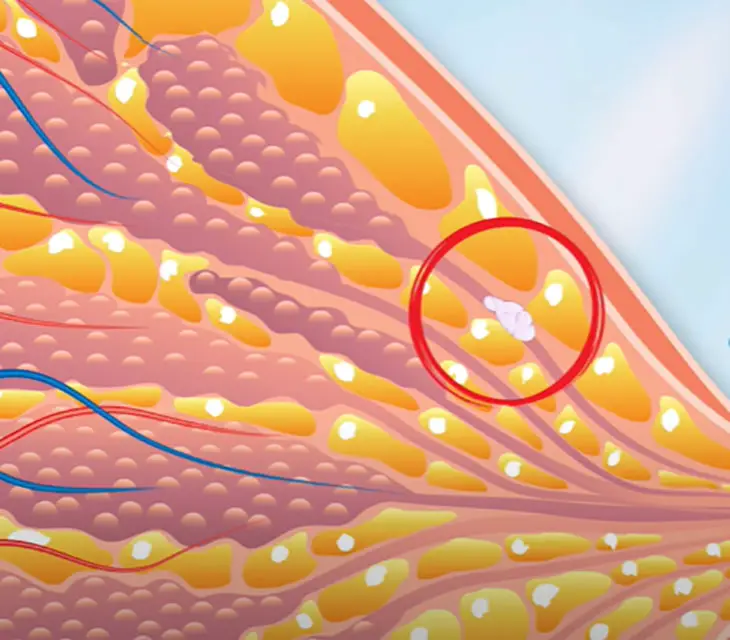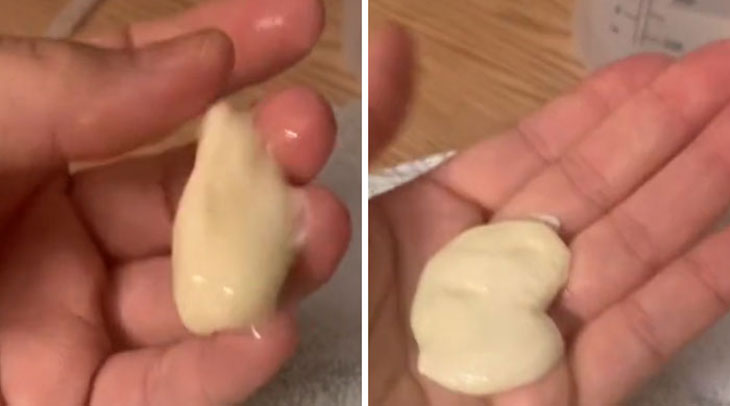You may have heard of clogged ducts if you’re a breastfeeding mom. But what does clogged duct look like, and how to spot them?
Plugged ducts are a common problem that can cause breast pain, discomfort, and even breast lumps.
They can also affect your flow of milk and your baby’s health. That’s why knowing how to recognize and treat clogged ducts as soon as possible is important.
In this blog, we’ll show you what clogged ducts look like, what causes them, and how to prevent and use breastfeeding medicine to clear them at home.
Read on to learn more about this breastfeeding challenge and how to overcome it.
What Does Clogged Duct Look Like?

When you breastfeed, milk flows from your breast tissue to your nipples through tiny tubes called milk ducts. Your nipple has many small holes called pores, about 15 to 25 of them.
But when you nurse your baby, only 6 or 7 pores are active and let milk out. The rest of the pores are closed and don’t release any milk.
Sometimes, these ducts get blocked by inflammation or pressure, and milk gets trapped inside.
This makes your breast feel sore and swollen, and you may see a red lump on your skin (a clogged milk duct).
It usually happens when milk is not drained from your breast, or something presses on your ducts.
A clogged duct can lead to infection if not treated properly, so it’s important to seek medical advice if you have any signs of a clogged duct.
What Causes Clogged Milk Duct? 3 Common Reasons
Many healthcare providers usually ask, “Can you feel a clogged milk duct release?” to check your health when having clogged ducts and determine the right reasons for this problem.
Three reasons explain the phenomenon of plugged ducts, including:
Wear Tight Clothes
Tight clothes may seem handy, cozy, or fashionable for breastfeeding moms. But they can do more harm than good.
They can squeeze the breast and block the milk ducts while you constantly get different breastfeeding positions for your child.
Wearing tight clothing can also make you sweat more and clog your pores, leading to pain, infection, and a low milk supply.
Have Nipple Problem
You can encounter some nipple problems, such as obstruction of milk flow, sore breasts, milk blisters, etc.
Nipple problems can also make your breasts more vulnerable to bacteria.
If your nipples are sore, cracked, or bleeding, bacteria can enter through the wounds and cause hard-to-heal infections.
Hormonal changes in your body can also cause other issues regarding nipples. Hormones can make your milk ducts fill with dead skin cells and debris.
This can clog your ducts and make them prone to infection during breastfeeding session time.
Get Engorgement
Breast engorgement occurs when there is a lot of milk in the breast, happening in the early days. The breast suddenly getting increased volumes of milk daily will appear this.
Mothers might experience it if their baby skips a feed or sleeps much longer than usual. Overactive letdown or fast milk flow can lead to your baby gagging or choking on milk.
This is the main reason for pain during letdown (for initial flow) because your baby cannot empty your breast fully.
How To Know If Milk Ducts Are Clogged Or Not?

If you want to know when a nipple pain clogged duct occurs, you should get some outstanding symptoms in days of breastfeeding, including:
- A hard, tender, red, hot, or swollen lump in your breast.
- Pain or discomfort near the lump, especially during letdown or feeding.
- A milk plug or blister on your nipple (a small white dot).
- A decrease in milk supply or flow on the affected side.
A clogged milk duct can lead to a mastitis infection when applying a feeding schedule by milk for your child, which can cause fever, chills, and flu-like symptoms.
If you have these symptoms, you should see your doctor as soon as possible to balance one healthy feeding routine the next time.
How To Treat Milk Ducts Clogged
Breast surgery is a bad experience due to clogged ducts, and you should learn how to treat them immediately after detecting signs of clogged duct while breastfeeding to improve your health.
Remember to conduct treatments for all entire breast positions while you are in the time during breastfeeding to restrict issues completely.
Below are how to get rid of milk ducts and how to prevent an oversupply of breastmilk effectively:
How To Get Rid Of Milk Ducts
You don’t have to suffer from a clogged milk duct. You can clear it at home with these simple steps:
- Start feeding your baby on the affected breast. Your baby will suck harder on the first breast and help drain it.
- Feed your baby often and let them nurse for as long as they want (at least every 1.5 to 3 hours and up to 20 minutes per breast)
- Massage the lump gently while feeding by using your fingers to press the lump towards your nipple.
- Apply a warm compress (using warm water) before feeding, helping soften the lump and make it clear.
- Try different feeding positions, allowing you to stimulate other parts of your breast.
- Ensure your baby is well-positioned and latched, encouraging your baby to take a big mouthful of your breast and suckle deeply.
- Express or pump any leftover milk after feeding to prevent further clogging and keep up your supply.
If you need pain relief, take acetaminophen or ibuprofen, but check with your breastfeeding specialist first.
Following these tips, you can clear a clogged milk duct and enjoy breastfeeding your baby without pain or infection.
How To Prevent Milk Duct Clogged Occurring
Here’s what you need to do to have a better breastfeeding experience:
- Avoid putting pressure on your breasts by wearing loose-fitting clothes and bras that fit well. You can even go braless or try a bigger cup size.
- Try to have suggestions from your breastfeeding counselors for restricting pain with baby breastfeeding early.
- Change your baby’s nursing position often to help them drain all parts of your breast and avoid leaving any milk behind.
You should get further information on common breastfeeding challenges to have good preparations before caring for your baby during feedings.
Reading books about concerns about feeding or how to prevent pain with latch can be a good solution for breastfeeding mothers.
FAQs

Do Clogged Milk Ducts Happen Constantly?
Clogged milk ducts are not a constant problem for most breastfeeding mothers. They usually happen when the breast is not emptied well or often enough.
However, some mothers may get them more frequently due to stress, tight clothing, or poor latch.
When Should You Contact A Doctor For Milk Ducts Clogged?
You should contact your doctor for clogged milk ducts if you have signs of infection, such as fever, chills, or flu-like symptoms.
You should also see your doctor if the lump does not clear within a few days, gets larger or more painful, or affects your milk supply or breastfeeding.
How Can You Massage Your Milk Ducts?
You can massage your milk ducts by using your fingers to press the lump or clogged area towards your nipple gently.
You can do this before and during breastfeeding or pumping to help the milk flow. You may also use a warm compress or shower to soften the lump.
Conclusion
There are many conditions in breastfeeding to answer the “What does clogged duct look like?”. You can feel pain or discomfort near the lump, especially during letdown or feeding.
It may also be accompanied by a milk plug or blister on your nipple. Remember to contact your doctor to treat this problem as soon as possible.
